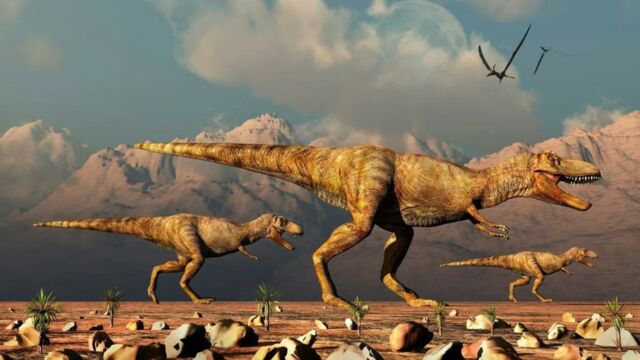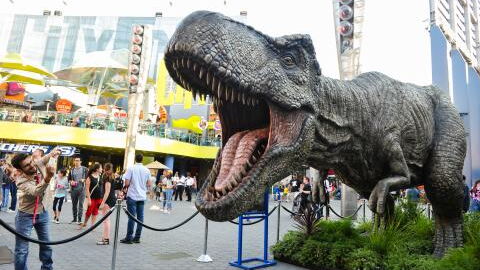If you were to travel back in time to Montana 67 million years ago, you would enter the realm of a true tyrant: the iconic Tyrannosaurus rex. Before venturing into this lost world, you might want to know how far away the nearest T. rex is, on average?
Discover our latest podcast
It may seem impossible to determine, but after combing through two decades of data on the superpredator, a new study has managed to estimate the population density of this animal. In all likelihood, the nearest T. rex would be just within 24 km of your position... or perhaps much closer.
A revolutionary, and terrifying study
The new study, published in the journal Science, also claims to translate these population densities into estimates of the total number of T. rexes that ever lived on Earth. On average, the researchers estimate that at any given time there would have been about 20,000 T. rexes, and that 127,000 generations of these dinosaurs would have followed one another. These averages imply that a total of 2.5 billion T. rex lived across their native North America, from Alaska to Mexico, over a period of about two to three million years.
This is not the first time that scientists have attempted to estimate the number of T. rex that have walked the Earth's surface. In fact, the average population density established in this new paper, about one T. rex per 108 km², is not so far from a previous estimate published in 1993. However, the new study used the latest biological data on T. rex to attempt to accurately determine the lower and upper limits of the total population
After running several million computer simulations, each composed of slightly different variables, the study determined that the total number of T. rex must have ranged from 140 million at the low end to 42 billion at the high end, with an average of around 2.5 billion. At any given time, there would have been between 1,300 and 328,000 living T. rex, with an average of 20,000 specimens.
Holly Woodward, a paleontologist with the Oklahoma State University Center for Health Sciences who was not involved in the study, commented:
It's really fascinating to see someone use everything we know about T. rexes to try to assess their population dynamics. It's interesting and kind of funny that it hasn't been done at this kind of scale yet.
A thorough T. Rex census
Over the past twenty years, researchers have made a number of discoveries about T. rex, including their lifespan (about 28 years), the age of their sexual maturity (around 15.5 years), and their weight (7 tonnes on average). These data have made it possible to calculate the approximate generation time of T. rex, more or less 19 years, as well as their average body mass over time.
To reach the population estimate for T. rex, the researchers used a theory linking body mass and population density in living animals. On average, when body mass increases by a factor of 10, density decreases by more than four-fifths, a trend known as Damuth's law.
Applied and adapted to T. rex, which is not a mammal, Damuth's law resulted in a total of between 140 million and 42 billion representatives.
The lead author of the study, Charles Marshall, a palaeontologist at the University of California at Berkeley, added:
In palaeontology, estimates are complex. Instead of focusing on the estimate, I preferred to frame it. Is it possible to set solid low and high limits for this value?
Forever frozen in time
In addition to gaining a better appreciation of the numbers of these juggernaut predators, Marshall and his team were able to extract from the data an estimate of the frequency of fossil formation. The question was whether the chances of a T. rex fossilising could be quantified in the same way as, for example, the risk of being struck by lightning.
To date, there are about 100 known T. rex specimens, but 40% of them are privately or commercially owned and cannot be reliably studied. For this reason, Marshall's team counted only 32 post-youth T. rex fossils for this study, those held by public institutions.
If all 2.5 billion T. rexes produced only these 32 fossils in their entire history, then fossilisation would involve only 1 in 80 million T. rexes. Even assuming that this percentage is higher and that we have not yet found all the fossils, such a low probability shows how rare it is for a carcass to be buried quickly enough and under the right chemical conditions to mineralise and produce a fossil.
If T. rex were a thousand times less abundant, 2.5 million instead of 2.5 billion, we might never have found them.















